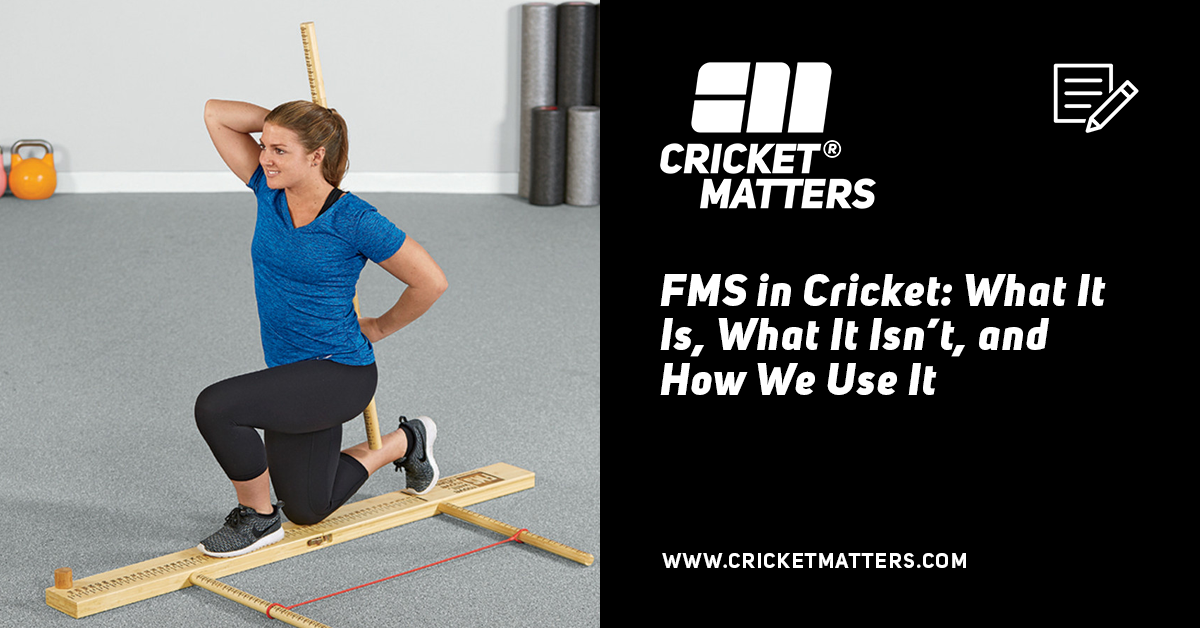
I hope you enjoy reading this blog post.
James Breese, Cricket Matters FounderIf you need my help with cricket coaching, strength and conditioning, injury rehab, or nutrition, click here.
The Functional Movement Screen in Cricket (FMS) is the foundation of how we measure movement and reduce injuries.
Talent gets you on the pitch. Movement quality keeps you there. The best players simply move better than the rest.
In cricket, poor patterns always show up — fast bowlers’ backs, batters’ hips and groins, keepers’ knees. Ignore them, and the same injuries keep coming back.
The top players don’t just look smooth — they move smooth. As legendary sprint coach Charlie Francis said: “Looks right, flies right.”
That’s where the Functional Movement Screen (FMS) comes in.
Think of it as a quick “MOT for your body” — seven simple tests that show how well you move, where you’re stiff, and where you’re compensating.
Why does that matter? Because it shapes everything:
- It helps us write smarter training plans (no cookie-cutter gym work).
- It highlights where you might be at risk of injury before it happens.
- And sometimes, it even explains technical faults — like why a batter keeps losing balance or a bowler can’t hit front-foot positions.
In this blog, you’ll learn what FMS is, what it isn’t, the seven tests explained, how scoring works, and—most importantly—how we apply it in cricket.
At Cricket Matters, FMS is often the first step in our Performance Analysis. It gives us a clear movement baseline so we can build a plan that fits your role, whether you’re a bowler, batter, or keeper.
Table of Contents
What Is the FMS Functional Movement Screen?

The Functional Movement Screen (FMS) is a simple way of rating and ranking how well you move. It’s not about diagnosing injury or isolating a single joint — it’s about spotting weak links in the chain before they break.
The screen uses seven basic movements — squatting, lunging, stepping, reaching, pushing, and rotating — to show whether you can move well under control. Each one is scored from 0–3:
- 3 = you do it cleanly
- 2 = you complete it, but with compensation
- 1 = you can’t complete the movement
- 0 = you feel pain (which means stop and get assessed)
If you don’t move well, you can’t play well. It’s that simple.
Gray Cook, Founder of Functional Movement Systems
Just as important as the number is the symmetry between left and right. A fast bowler who lunges better off their front leg than their back is carrying a hidden imbalance that will eventually show up in their action.
FMS matters because movement is the foundation of performance. Picture the performance pyramid: movement at the base, then strength and power, then cricket skill on top. Build skill on a shaky base, and the workload of bowling, batting, or keeping falls on dysfunction — which is why the same injuries keep coming back.
In cricket, the relevance is clear:
- Fast bowlers’ backs rely on clean hip and thoracic rotation.
- Batters’ groins and hips need to move freely for singles and rotation.
- Keepers’ knees must handle repeated deep squats without breaking down.
At Cricket Matters, we use FMS as part of our Performance Analysis. It’s the first step: a movement baseline that helps explain why you’re sore, why a technical fault won’t shift, or why your body keeps breaking down. From there, we can map a plan that matches your role in the game.
The 7 Functional Movement Tests (Explained Simply)
The FMS isn’t about how much weight you can lift. It’s about how well you move through the basics. Each test highlights whether your body is moving cleanly, compensating, or breaking down. Here’s what they are — and why they matter in cricket.
1. Deep Squat
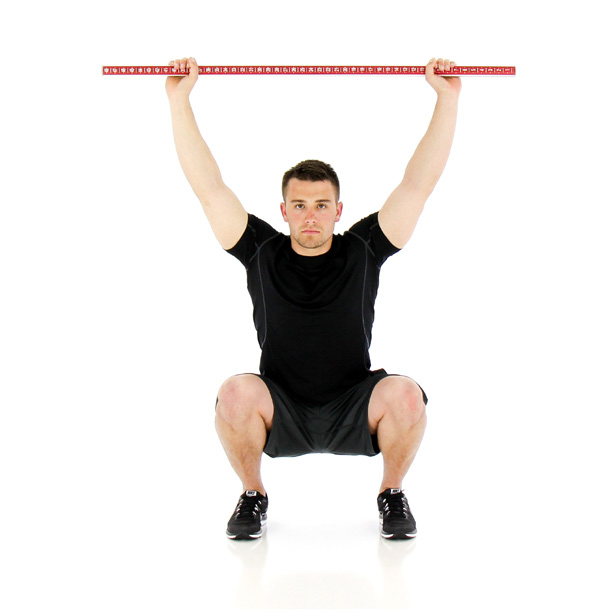
Purpose: Checks total-body mobility and control — ankles, hips, thoracic spine, and shoulders all at once.
How it looks: Holding a stick overhead, you squat as low as you can while keeping your chest tall and heels on the ground.
Why it matters in cricket: If you can’t squat deeply with control, you’ll struggle to get into strong front-foot batting positions or to load and brace in a bowling stride. Poor mobility here often leaks power or forces compensations higher up the chain.
2. Hurdle Step
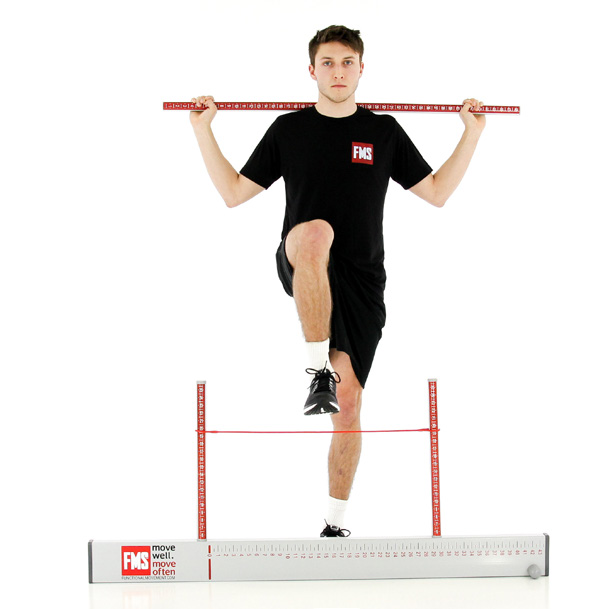
Purpose: Tests single-leg stability, hip mobility, and balance while moving.
How it looks: You step over a band set at knee height, keeping balance and posture steady.
Why it matters in cricket: Think about sprinting between wickets or chasing a ball in the outfield — every stride is a single-leg movement. If stability is missing, hamstrings and hips pay the price.
3. Inline Lunge
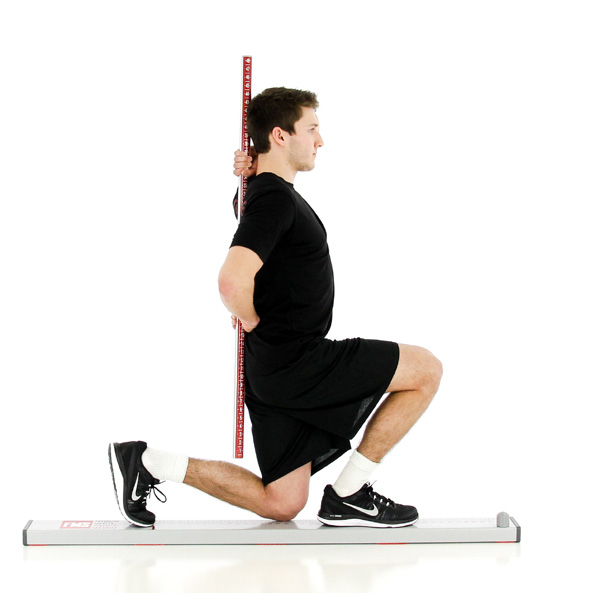
Purpose: Assesses hip and ankle mobility, plus stability of the trunk in a split stance.
How it looks: With one foot in front of the other on a line, you lunge down while holding a stick overhead and behind your back.
Why it matters in cricket: Bowlers need this for front-foot stability at delivery. Batters need it for planting and rotating off the front leg. Weakness here means collapsing in the action, losing control, or overloading the back.
4. Shoulder Mobility
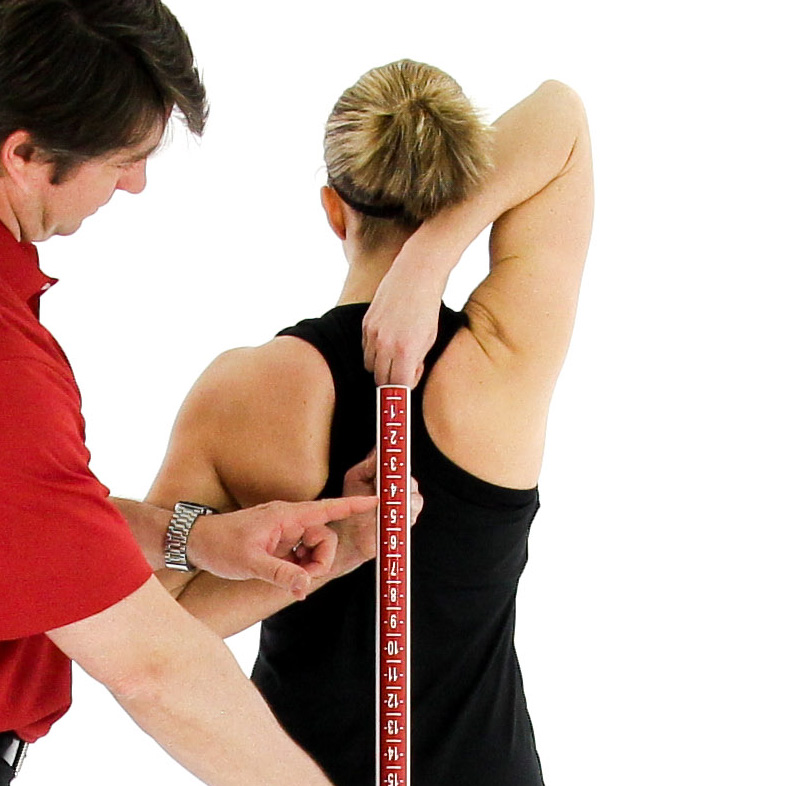
Purpose: Looks at shoulder range of motion and symmetry between sides.
How it looks: One hand reaches over the shoulder, the other up the back — the closer they meet, the better.
Why it matters in cricket: Throwing and bowling both rely on clean shoulder mobility. Limited range shows up as shoulder pain, loss of speed, or compensations through the back and ribs.
5. Active Straight Leg Raise
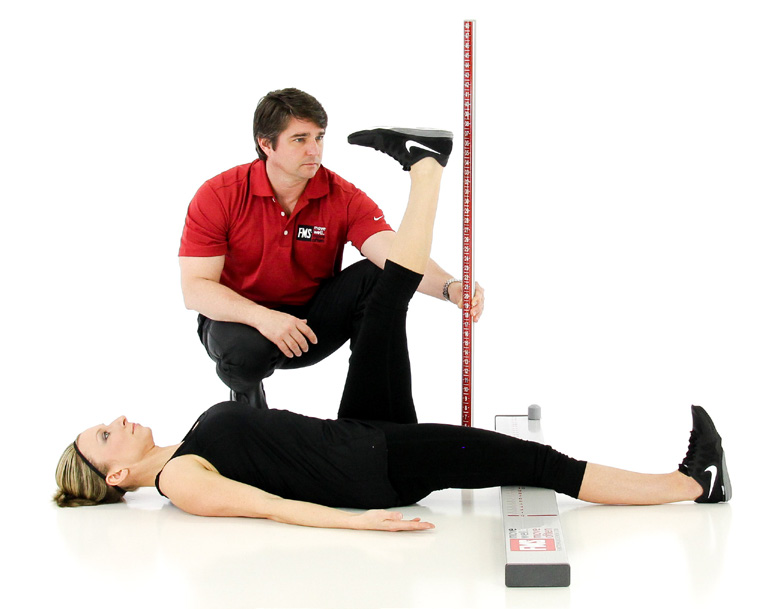
Purpose: Screens hamstring flexibility and hip separation while the pelvis stays stable.
How it looks: Lying flat, you lift one leg straight up while keeping the other pinned to the ground.
Why it matters in cricket: Running, diving, and fast bowling all demand length through the hamstrings. If one side is tighter, sprint mechanics suffer and injury risk climbs.
6. Trunk Stability Push-Up
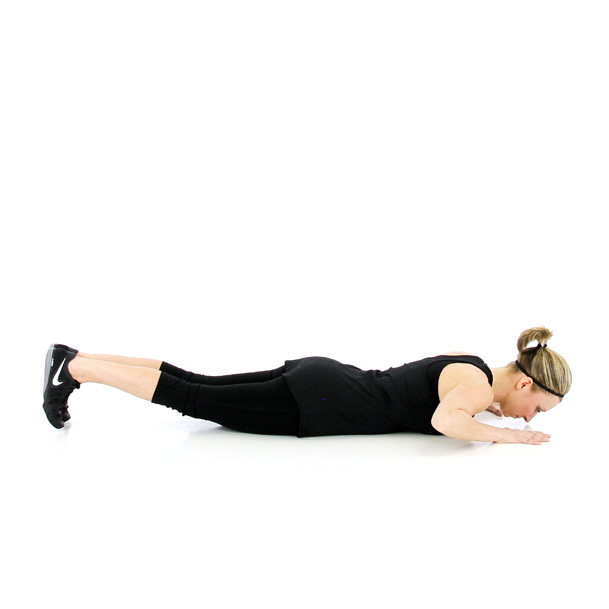
Purpose: Tests core stability and control of the spine under load.
How it looks: You set up in a push-up position and lower yourself as a unit — no sagging or arching.
Why it matters in cricket: A strong, stable trunk is non-negotiable for bowlers generating pace, keepers exploding from crouch, and batters rotating hard. Poor control here is a big contributor to back injuries.
7. Rotary Stability
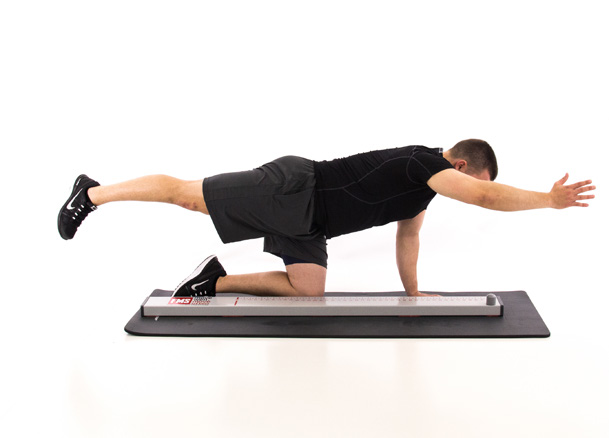
Purpose: Assesses coordination, balance, and core stability in diagonal patterns.
How it looks: On hands and knees, you extend one arm and the opposite leg, then draw them back together without wobbling.
Why it matters in cricket: Cricket is full of diagonal movements — bowling actions, throwing mechanics, even cross-body batting strokes. Asymmetry here often shows up as repeated niggles on one side.
That’s the FMS in action: 7 simple tests that show how your body moves before it’s under pressure. They don’t diagnose injuries, but they do highlight weak links — the ones cricket is guaranteed to expose.
What the FMS Tells Us — and What It Doesn’t
The Functional Movement Screen isn’t about predicting the future or telling you how many runs you’ll score. It’s about giving you a baseline of how you move right now.
What It Does Tell Us
- Movement quality: Do you move smoothly or are there breakdowns?
- Symmetry: Is one side stronger, looser, or more stable than the other?
- Mobility vs. stability: Can you control your joints through a full range, or are you compensating somewhere else?
In cricket terms: does your back leg collapse in the lunge (front-foot stability for batting)? Does your shoulder struggle overhead (bowling load)? Does your single-leg balance break down (keeper mobility or fielding sprints)? These patterns show up long before pain or breakdown.
What It Doesn’t Do
- It doesn’t diagnose injury. That’s a physio’s job.
- It doesn’t measure skill. A perfect FMS score won’t fix your batting technique or add pace to your bowling.
- It doesn’t predict outcomes. A low score might mean higher risk, but it’s not a crystal ball.
Why It Matters for Cricket
Cricket is repetitive: bowlers hammer the spine and shoulders, batters rotate through hips and groins, keepers live in deep squats. Weak links eventually give way. FMS shows us where those weak links are — before they turn into injuries or persistent niggles.
The Key Distinction
FMS is an assessment, not an exercise. The tests don’t make you fitter or stronger. What they do is guide your plan — highlighting where you need corrective work, strength, or mobility before you pile on more load. And because it’s standardised, you can retest and track whether your movement is actually improving.
Understanding FMS Scores (Good, Bad, and Misleading)
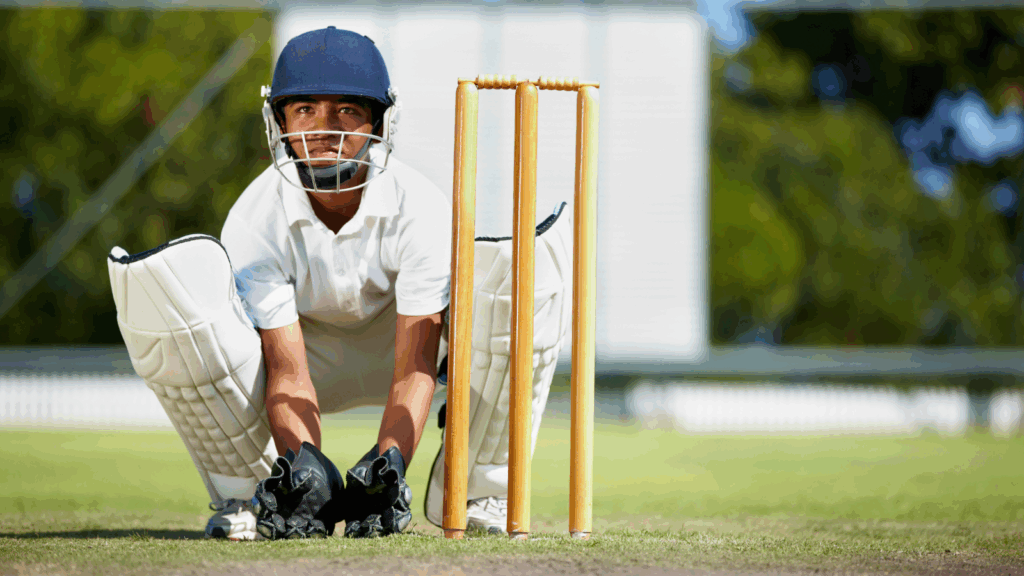
The FMS uses a 0–3 scoring scale across seven tests. Add them up and you get a composite score out of 21. Simple on paper, but here’s what it really means:
- 3 = You nailed it. Full movement, no compensation, looks clean.
- 2 = You got it done. Completed with some flaws or restrictions.
- 1 = You couldn’t do it. Big breakdown in movement.
- 0 = Pain. The test is stopped and flagged for further assessment.
So, What’s a “Good” FMS Score?
You’ll often hear 14 out of 21 quoted as the cut-off. Below that, some studies show a higher risk of injury. But Gray Cook — who developed FMS and who I’ve been lucky to call a mentor and friend — explained it to me this way:
It’s not about chasing 21/21. Nobody moves perfectly. It’s like blackjack: you’re not trying to hit 21 every hand, you’re trying to beat the dealer. In FMS terms, that means identifying your weak link and improving it, not obsessing over a perfect score.
Why FMS Scores Matter in Cricket
Context is everything. A fast bowler with repeated lumbar pain may score low on the active straight leg raise or trunk stability push-up — patterns linked to spinal load. A keeper might struggle with the deep squat thanks to hip or ankle restrictions. These aren’t just numbers, they’re clues pointing us to the areas most likely to break down in play.
What a Score Doesn’t Mean
A “3” doesn’t guarantee performance. It just means you did that movement well, today. A “1” doesn’t mean you’re doomed — it highlights something to address before it derails you.
The FMS is a starting point, not a verdict.
How Often Should Cricketers Do FMS?
Movement isn’t static. It shifts with training load, fatigue, injuries, and even technical changes. That’s why the FMS isn’t a one-off test — it’s a tracking tool. The timing matters just as much as the score.
- Pre-season: Establish a true baseline. Before the overs, gym sessions, and fixtures stack up, we screen to see where each player is starting. That way, training plans target the weak links early.
- Mid-season: If performance dips or technique starts breaking down — maybe stride length shortens, or a bowler’s action stiffens — a repeat FMS often shows whether the problem is movement, not skill. It’s also the checkpoint for players picking up recurring niggles.
- Post-season: The debrief. We compare results to pre-season to see which areas held up and which broke down. This guides off-season plans so players don’t just rest, they rebuild.
- Post-injury: Essential. A cricketer may feel “fit” to play, but unless movement quality is restored, they’re just compensating. Screening after rehab tells us if the system is back online — not just the sore spot.
Durability beats talent when the season gets long.
Mike Boyle
Think of it like scoring a cricket season: you don’t just look at one innings, you track the averages. FMS works the same way — spotting patterns over time so you can act before small cracks become long layoffs.
Who Should Take an FMS Test?
The Functional Movement Screen wasn’t designed just for one group. Since its creation in 1997, it’s been used across elite sport, the military, firefighters, and everyday athletes — anyone who needs to move well and stay durable.
In cricket, that means every player can benefit. At Cricket Matters, we generally start screening from around age 14. Younger kids often struggle with the technical demands of the full test, so simpler movement screens are more appropriate. But from early teens upwards, the FMS is invaluable for spotting red flags before they become injuries and for guiding smarter, safer training plans.
Senior players use FMS differently. As the body ages, mobility drops, joints stiffen, and compensations creep in. A periodic screen shows where you need maintenance, helping extend careers and avoid overloading weak links.
And for return-to-play after injury, FMS is essential. It doesn’t just confirm you’re pain-free — it shows whether you can move well enough to handle the stress of bowling, batting, or keeping again. That movement baseline closes the gap between finishing rehab and being truly ready to perform.
Quick Guide: Who Benefits Most from FMS in Cricket
| Group | Why It Matters |
| Juniors (14+) | Spots early red flags, shapes safer training, reduces risk of overuse injuries |
| Seniors | Tracks age-related changes, maintains mobility/strength balance, aids longevity |
| Return-to-play | Confirms movement readiness post-injury, bridges rehab to full performance |
How Can I Improve My FMS Score?
Improving your FMS score isn’t about chasing a number. A “15” instead of a “12” won’t magically make you a better cricketer.
What matters is cleaning up the weak links behind the score. Do that, and you move better, stay healthier, and perform longer.
Step 1: Clear the roadblocks
Most low scores come from mobility restrictions.
- Tight hips block rotation in batting and bowling.
- Stiff thoracic spines force bowlers into poor back positions.
- Ankles that don’t dorsiflex make fielders slower to cut and change direction.
Mobility comes first. Until you free up the range, nothing else sticks.
Step 2: Build stability and control
Mobility without control is wasted. Once you’ve earned new range, you need the stability to own it. That means:
- Core sequencing and breathing drills to lock in trunk control.
- Single-leg balance and hip stability for sprinting and batting.
- Shoulder and scapular stability for bowlers and fielders.
This is where your body learns not just to move, but to move under control.
Step 3: Rebuild the pattern
Only once mobility and stability are in place should you reload the full movement. Groove a clean deep squat. Rebuild a solid lunge. Retrain a push-up with proper trunk stability. The goal isn’t a bigger number — it’s a cleaner, more efficient pattern.

Have You Downloaded Our FREE 7-Day Gym Workout Plan?
Grab your complete step-by-step 7-day gym workout plan for cricketers today. There will be no more Guesswork. Just follow the plan and get results.
What That Looks Like in Cricket
- Deep Squat → Free up ankles and hips for better batting stance and wicketkeeping posture.
- Hurdle Step → Single-leg balance and hip stability for sprint mechanics.
- Inline Lunge → Hip mobility and trunk stability for front-foot batting and bowling control.
- Shoulder Mobility → Cuff and thoracic work for overhead throwing and bowling actions.
- Active Straight Leg Raise → Hamstring mobility and core control for sprinting stride length.
- Trunk Stability Push-Up → Core sequencing for fast bowlers to protect the lumbar spine.
- Rotary Stability → Cross-body control for rotation in batting and spin bowling.
Cricket’s Big Wins
If you want the short version, the fastest ways most cricketers improve their scores (and their game) are:
- Hip rotation drills → unlock smoother batting and bowling.
- Hamstring eccentrics (RDLs, Nordics) → protect against sprint injuries.
- Shoulder cuff and scapular control → stronger, healthier throws.
- Core sequencing and breathing work → protect fast bowlers’ backs.
The principle is simple: mobility → stability → integration. Assess, fix the weak link, reload the pattern.
That’s how you move better, score better, and, more importantly, play better.
How We Use FMS in Cricket at Cricket Matters
At Cricket Matters, we don’t leave performance to guesswork. Everything runs on systems — because systems give consistency, and consistency builds better cricketers.
That’s why FMS is part of every Performance Analysis we run. It’s not just a test — it’s our baseline. Before we touch strength, skill, or recovery, we want to know how you move. If there’s pain, we use the SFMA. If it’s about power or endurance, we add role-specific screens. But the process is always the same: assess first, then build.
The reason’s simple. When every coach, physio, and therapist on our team uses the same system, you don’t get mixed advice or wasted weeks. Everyone speaks the same language, sees the same patterns, and works from the same roadmap. That’s how you keep players moving forward without confusion.
It’s no different to cricket technique. You wouldn’t teach ten different grips or stances to the same player and expect them to succeed. You set a foundation, you measure it, and you build from there. FMS is our version of that foundation for movement.
It doesn’t give every answer — but it gives the first one. A clear baseline we can track, retest, and use to shape plans that reduce injury risk and keep you performing season after season.
That’s why for us, FMS isn’t optional. It’s fundamental.
Final Word: FMS and Cricket
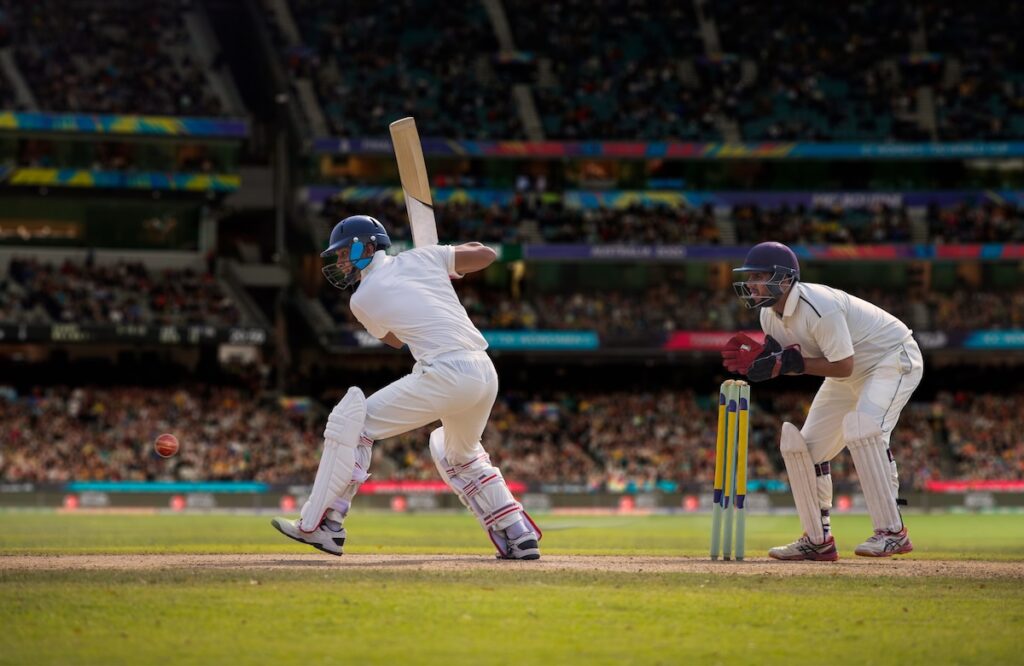
The Functional Movement Screen isn’t magic. It won’t tell you how many runs you’ll score or suddenly add pace to your bowling. What it does is far more useful: it gives a clear framework to spot weak links before they become injuries.
In cricket, that matters. The players who last the longest aren’t always the most talented — they’re the ones who screen, build, and adjust. They know where their bodies break down, and they use that knowledge to stay strong, mobile, and available.
At Cricket Matters, we live by a simple rule: assess, don’t guess. Whether it’s your bowling action, your hip rotation for batting, or your ability to move freely as a keeper, FMS is often the first step in building a plan that keeps you performing better, for longer.
Ignore it, and you’re rolling the dice. Use it, and you’ve got a map.
Want to find out your own movement baseline? Book a Performance Analysis — where FMS is the starting point to building your game the right way.
Further Reading
Evidence Corner: What the Research Says
The Functional Movement Screen (FMS) is one of the most widely researched systems for assessing movement quality in sport. Here’s what the science actually says — and how it applies to cricket.
What it Does Well:
- The FMS is highly reliable when performed by trained professionals. A key reliability study by Teyhen et al. (2012) found excellent consistency between raters (ICC 0.76–0.98), confirming that it’s a stable method for evaluating movement quality.
- Research shows it can highlight asymmetries, mobility limits, and stability deficits that often underlie common cricket injuries.
- Structured corrective programs have been shown to improve FMS scores, reflecting better control and movement efficiency.
Where it Falls Short:
- Systematic reviews show that while the FMS is reliable, its ability to predict injuries on its own is limited — especially in trained or elite athletes.
- It should be used as part of a comprehensive movement and workload assessment, not a stand-alone injury predictor or performance test.
What this Means for Cricketers
Use the FMS as your movement baseline — a way to identify and fix weak links before the season starts. Combine it with strength testing, workload monitoring, and role-specific screening (such as bowling, batting, and keeping) for a comprehensive performance picture.
Key References:
- Teyhen, D. S., Shaffer, S. W., Lorenson, C. L., et al. (2012). The Functional Movement Screen: A Reliability Study. Journal of Orthopaedic & Sports Physical Therapy, 42(6), 530–540. JOSPT PDF
- Bonazza, N. A., Smuin, D., Onks, C. A., et al. (2017). Reliability, validity, and injury predictive value of the Functional Movement Screen: A systematic review and meta-analysis. American Journal of Sports Medicine. DOI:10.1177/0363546516641937
- Moran, R. W., Schneiders, A. G., Mason, J., et al. (2017). Do Functional Movement Screen composite scores predict subsequent injury? A systematic review with meta-analysis. British Journal of Sports Medicine, 51(23), 1661–1669. Full Text
- Chalmers, S., Milanese, S., & Fuller, J. T. (2019). Factors influencing the relationship between the FMS and injury risk in sporting populations: A systematic review and meta-analysis. Sports Medicine, 49(9), 1447–1467. Springer Link
- Clark, S. C., Rowe, N. D., & Adnan, M. (2022). Effective interventions for improving Functional Movement Screen scores among “high-risk” athletes: A systematic review. International Journal of Sports Physical Therapy, 17(2), 310–320. Open Access PDF

Have You Downloaded Our FREE 7-Day Gym Workout Plan?
Grab your complete step-by-step 7-day gym workout plan for cricketers today. There will be no more Guesswork. Just follow the plan and get results.
FAQ
What Is the Functional Movement Screen in Cricket?
The Functional Movement Screen (FMS) is a system for assessing how well an athlete moves through fundamental patterns such as squatting, lunging, reaching, and balancing. The aim is not to diagnose injuries or measure cricket skill, but to highlight restrictions, asymmetries, or compensations that might increase the chance of injury. For cricketers, this is especially valuable because the sport is so repetitive. Fast bowlers hammer their backs and hips, batters rely on clean rotation through the groin and trunk, and wicketkeepers spend hours in deep squat positions. An FMS assessment provides a movement baseline that coaches, physios, and strength staff can use to build smarter training plans, identify hidden risks, and guide long-term performance strategies.
What Are the 7 Functional Movement Screening Tests?
The FMS is made up of seven standardised movement tasks that cover the whole body. These include a deep squat to check mobility and control through the hips, ankles, spine, and shoulders; a hurdle step to test single-leg balance and hip mobility; and an inline lunge to assess trunk stability and lower-body alignment in a split stance. The other tests are shoulder mobility, which looks at reach and symmetry overhead and behind the back; the active straight leg raise, which screens hamstring flexibility and hip separation; the trunk stability push-up, which assesses core strength and spinal control; and rotary stability, which measures diagonal coordination on hands and knees. Together these tests provide a simple snapshot of movement quality. In cricket terms, the inline lunge can reveal whether a bowler can stabilise properly on the front foot, while the straight leg raise may expose hamstring tightness that affects sprinting and fielding.
What Is a Good FMS Score for Athletes?
Each of the seven tests in the FMS is scored from zero to three, which adds up to a composite score out of 21. Research has often suggested that a score of 14 or higher is associated with a lower risk of injury, while scores below 14 may signal increased risk. But in reality, the raw number tells only part of the story. Symmetry between left and right sides is often more important than the overall total. A bowler who scores a “2” on both sides of a lunge is less concerning than one who scores a “3” on one side and a “1” on the other. For cricketers, these imbalances are what often lead to breakdowns in the action, as one side of the body compensates for the other under repetitive load. A good FMS score, then, is not just about being high, but about being balanced and efficient.
How Do You Interpret FMS Scores?
The FMS uses a simple scale where three means a movement is performed well, two means it is completed with noticeable flaws, one means the athlete cannot perform the movement properly, and zero means the athlete feels pain during the test. A composite score out of 21 is then produced, but the real value comes from looking at where the breakdowns or asymmetries occur. A single zero is a red flag that requires medical assessment regardless of the overall score. An imbalance between sides is also highly significant, because it often indicates uneven stress that will show up in performance. In cricket this might be a batter who rotates far more easily to the offside than the leg side, or a bowler whose back foot lunge collapses compared to the front. Interpreting FMS scores is therefore less about chasing a perfect number and more about identifying weak links before they become injuries.
How Often Should Cricketers Do FMS?
Movement patterns are not fixed. They shift with training load, fatigue, technical adjustments, and injuries, which is why FMS works best when repeated at different points in the year rather than as a one-off test. For most cricketers the best times to screen are pre-season, to establish a clean baseline before overs and fixtures accumulate; mid-season, if technique starts to break down or recurring niggles appear; and post-season, to compare with the starting point and guide the off-season training plan. Screening after an injury is also essential, because feeling pain-free does not always mean that the underlying movement quality has been restored. By repeating the FMS at these checkpoints, players and coaches can monitor trends over time and act early, reducing the risk of breakdowns during the busiest parts of the season.

